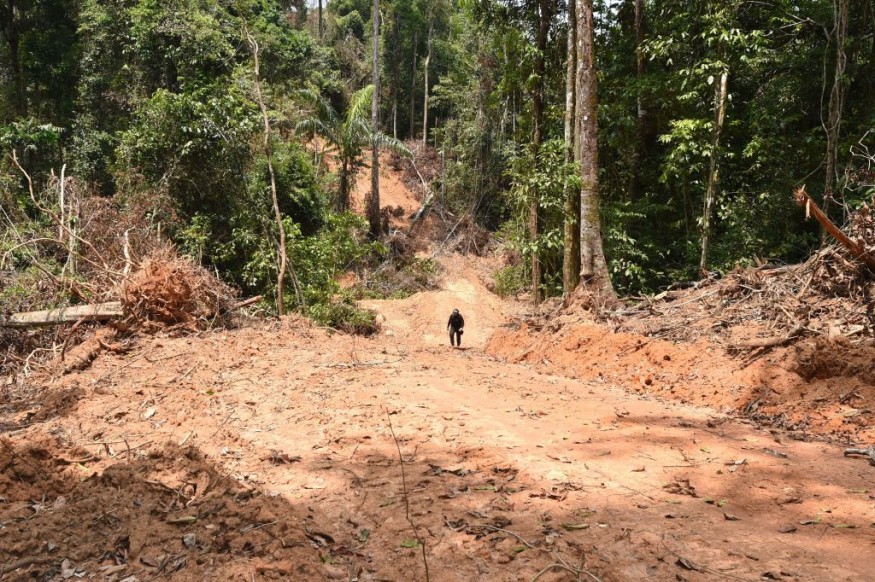A study that raises fears that the critically essential ecosystem is drifting towards a point of no return claims that human activity and drought may have destroyed more than a third of the Amazon rainforest, double the previous estimate.

Large Swathes Destroyed
Up to 2.5 million square kilometers of forest-an area 10 times the size of the United Kingdom-have been made less resilient by fires, land conversion, logging, and water shortages. The authors have warned against "megafires" in the future due to the area being drier, more combustible, and more vulnerable than before.
The research notes that between 5.5% and 38% of the world's largest tropical forest is less able to control the temperature, produce rainfall, store carbon, provide a habitat for other species, provide a means of subsistence for local people, and sustain itself as a functioning ecosystem.
In addition to the 17% of the original forest that was entirely removed over the past 50 years as Brazil advanced its mining and agricultural frontiers to meet the demands of a world that are becoming more affluent, populated, and high-consumption.
Lula's Pledge
Luiz Inácio Lula da Silva, the newly elected president of Brazil, has pledged to reverse course and implement a zero-deforestation program. However, the authors assert that if megafires are to be prevented in the future, effort must also be done on degradation.
"There is optimism, but as our paper demonstrates, it is insufficient to stop deforestation. According to Lancaster University's Jos Barlow, there is still much more work to be done.
An international team of 35 scientists and researchers from institutions including Brazil's University of Campinas (Unicamp), the Amazon Environmental Research Institute (IPAM), the National Institute for Space Research (INPE), and the UK's Lancaster University developed the findings, which were published on Thursday in Science. The findings are based on an analysis of previous studies, recent satellite data, and a new assessment of the effects of drought.
Most of the increase in Amazon deterioration above the prior estimate of 17% is due to a lack of water. Drought is a growing worry because it makes forests more susceptible to fire and reduces their capacity to regenerate by up to 34% through evapotranspiration, the process by which billions of plants produce rainclouds.
This has repercussions for a larger area, including food-producing areas that rely on the "flying rivers" of the Amazon to irrigate their crops. The most worrisome aspect of this is that it raises the possibility of a negative feedback loop in which drought reduces the forest's capacity to pump water, which then causes further drought.
Encouraging Lawmaker
The authors encourage policymakers to address the causes of degradation and give equal attention to the more well-known issue of deforestation to prevent these dangers from spiraling out of control. The visibility between the two varies substantially. Deforestation, easily recognizable by satellites, is the complete clearing of forests and converting the land for other uses. On the other hand, degradation is the partial loss of vegetation brought on by human activity and is sometimes masked because it occurs beneath the canopy of larger trees.
The difference between thinning and shaving your hair is just as noticeable to the naked eye. However, because deterioration impacts a much wider region, it has an impact that is at least as great as localized deforestation. According to the study, the amount of carbon emitted during degradation may be more than that during deforestation.
Because deterioration is challenging to quantify and characterize, the authors recognize that their estimations contain significant uncertainty. The vast range of estimates for the impacted area reflects this; they range from 5.5% of the remaining forest if just fire, logging, and edge impacts are accounted to 38% if drought effects are also considered.
Tipping Point
There is a disparity in the effects on society. The majority of the economic gains from logging and land clearing are directed toward far-off cities and other nations. In contrast, indigenous and other forest groups are the ones that experience the majority of the negative effects, such as the loss of forest products, poor air quality, and declining water quality.
When a forest is so severely damaged that local species flee, Barlow warns of socio-economic tipping points that result in less defense against extractive companies.
To maintain the exposed edges of the original vegetation, the authors of the article suggest policymakers increase deterioration monitoring, improve their ability to put out fires, stop logging, and establish secondary forest buffer zones.
For more news update about Environmental Action, don't forget to follow Nature World News!
© 2025 NatureWorldNews.com All rights reserved. Do not reproduce without permission.





